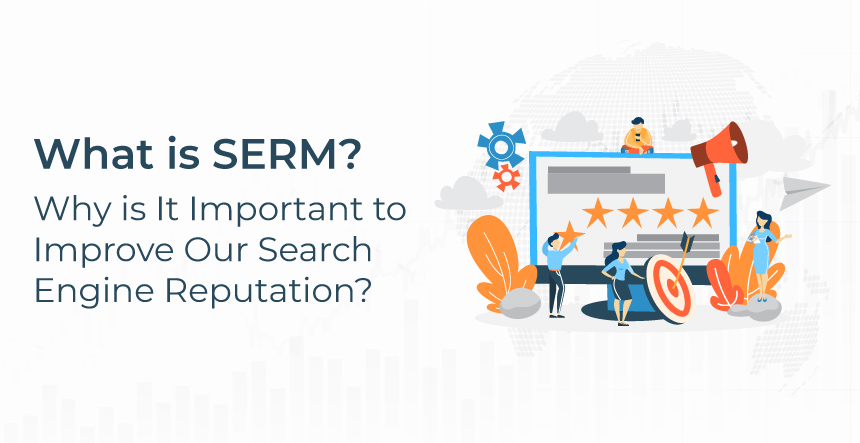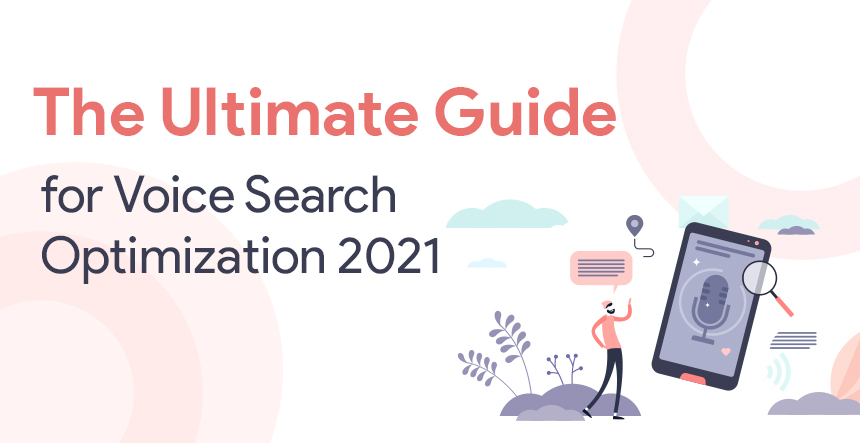
Google’s Web Vitals program aims to provide consistent guidelines for quality signals that are critical to providing a positive user experience on the web.
The newer challenge in SEO is Core Web Vitals. Although the significance of this task appears to be overestimated, websites designed for Core Web Vitals will soon have a greater chance of ranking in search engines.
These indicators, according to Google, are by far the most crucial for providing a great customer experience. This is the first step toward enhancing your rankings and boosting general SEO and WordPress efficiency.
If your website is based on WordPress, you’re in luck: the entire process can be accomplished with only a few plugins and a move to a speedier infrastructure.
Still, confused and would like to know more about it?
Keep reading this blog to know more about core web vials and how you can improve your WordPress site performance in a few easy steps.
What Are the Three Core Web Vitals?
Google employs three quality checks (Web Vitals) to measure the performance of the website. It is usually divided into three parts, namely Largest Contentful Paint (LCP), First Input Delay (FID), and Cumulative Layout Shift (CLS)
The descriptions of these procedures may appear overly complicated, but what they perform is pretty simple.
Let’s take a look at each Web Vitals assessment, what it measures, and how you may enhance your rating.
1. Largest Contentful Paint(LCP)
The time it would take for the biggest component on your website to appear is defined as the Largest Contentful Paint. It is typically an image, although it could also be a video or any information that is the hero of your website and acts as the most important element.
The concept is that the largest element has the greatest effect on the user.
If you’re wondering what constitutes a decent LCP time, these are Google’s guidelines:
- Excellent–Time less than or equal to 2.5 seconds
- Improvement Required–less than or equivalent to 4.0 seconds
- Poor – Over 4.0 seconds to load.
2. First Input Delay(FID)
The duration from when a user engages with something on your webpage and when their activity will begin processing that action is measured as the first input delay (FID).
Assume a user lands on your contact form webpage. They fill out the questionnaire and press the Submit button. FID will determine how fast your website handles that event.
So, First Input Delay is all about user interaction on your website and the time it takes for a user’s browser to begin processing the following chain of events after they click on a link.
Google describes FID scores as follows:
- Excellent–less than or equivalent to 100 ms
- Improvement Required–Less than or equivalent to 300 ms
- Bad – Over 300 ms.
3. Cumulative Layout Shift
Cumulative Layout Shift (CLS): This metric assesses the visual stability of your website. Some components of a website take a lot longer than others. During this period, the content of your website may move about on the display.
For example, if a user is viewing a text on a mobile phone, then a video embed loads above this, and the full text gets pushed down.
This can be quite annoying if a user is attempting to do an action, such as adding a product to a cart, and the button shifts down owing to other elements moving on the screen.
See how google measures this –
- Good–Lewer than or equivalent to 0.1 seconds
- Needs Improvement–Less than or similar to 0.25 seconds
- Poor–Over 0.25 seconds.
How to Measure Core Web Vitals on Your WordPress Website?
All of Google’s online development tools, from Page Speed Insights to Chrome DevTools, the CRUX Assessment, and others, are useful to monitor and analyze the Core Web Vitals.
If you choose to use any other performance measurement program, you should be aware that GTmetrix and Webpage tests have also begun to employ the Lighthouse performance metric.
Please Remember – These tools only show you the Largest Contentful Paint and Cumulative Layout Shift ratings.
The explanation behind this has always been the same: the First Input Delay can only be evaluated with real user engagement, and all these solutions depend on Lighthouse Lab Data.
To go even further, you can get the Core Web Vitals data from your Google Search Console panel.
This shows how many URLs on your site fulfilled the requirements, which URLs need to be improved, as well as which web pages have a bad score.
To gain more thorough statistics for Web Vitals, run the lighthouse speed test by heading to the Web.dev Measure tools or using the built-in test within Google Chrome.
How to do it?
Simply launch Chrome, right-click anywhere around the display, and choose the Examine tab. You’ll notice a Lighthouse button on the menus. Then, press the Get Report button.
Pro Tip For the most effective data, conduct the Chrome testing in Incognito mode. Otherwise, your browser add-ons may have a severe impact on the main web vital score it displays. (Add it in a different section)
Final Step
Once you’ve improved the URLs that required it, you’ll be able to browse on the Validation row and select the “Validate Fix” alternative. Please remember that the validation procedure can take at least two weeks, so be patient!
Do Core Web Vitals Affect SEO as a Ranking Factor?
Google began using Core Web Vitals as a determinant of performance in June 2021, so these indicators may have an impact on your SEO results.
Core Web Vitals are essential for good SEO practice. To achieve a better organic ranking in the search engines, it appears that all Core Web Vitals metrics must be met. The Core Web Vitals rating for unindexed pages is also important to stand out.
If you want to stay one step ahead of the game, paying attention to Core Web Vitals now is essential and will undoubtedly help in the long run.
In brief, if you give a damn about your SEO results, you must improve your Core Web Vital.
How to Improve Core Web Vitals on Your WordPress Website in 8 easy steps!
1. Optimize Your Images
We’ll begin with an excellent tip for improving core web vitals for your WordPress site: optimizing pictures. Image optimization is among the most valuable aspects you could do for your site.
That single large unoptimized picture on your webpage could cost you a lot of money. So, make sure you give your users a warm welcome by making that load as fast as possible!
And using WordPress makes it pretty easy. Because of the many plugins and features it provides, optimizing images is a breeze. The latest WordPress editions enable seamless lazy loading of visuals.
This implies that it would only load the images that are visible on the screen, leaving the rest to load when the person comes into contact with the display.
The use of a CDN is yet another component of evergreen website performance recommendation. A sequence of characteristics in the URL of a picture pushed by a picture CDN tells search engines how the picture should react.
2. Tidy Up Above the Fold
Core Web Vitals prioritize the upper portion of the page, also known as above-the-fold. The top section is what customers see when they have first arrived at the page. As a result, if this section loads rapidly, the entire page will appear to load faster as well.
The upper portion of the page is generally the slowest. It’s where businesses typically place large banner ads with high-resolution pictures, and where users will be swamped with various pop-ups and interactive elements.
The recommendation here is self-evident: keep the upper portion of your page as clean and light as feasible.
Another option is to use CSS styles instead of images. Collaborate with your graphic artist and web developer to create a visual that does not require any complicated visuals.
Even interactively sized content can be avoided. Some page elements, such as comment widgets, may lack size characteristics. This means that these components will move around until they find sufficient space. Make sure to move such components to the bottom of the page.
3. Optimize Your Code
The code will never be perfect, and there will always be items you can do to enhance it.
Shifting the sequence in which distinct lines of code are packed and removing unnecessary components from your source code are two options that may help to improve the performance of your code. Let’s take a look at two methods for optimizing your code.
Reversing the position method
If your page contains JavaScript, the browser will halt loading HTML until the JavaScript is loaded. From the standpoint of the user, it means glancing at a frozen page. As a result, your core web vitals will suffer due to an uncomfortable customer experience.
So, if the JavaScript isn’t critical, you can reverse the position in which it fills up — make it load once it would have rendered all the crucial components. And you can conveniently accomplish this with a plugin on a WordPress website.
Code reduction method
Code minification is the method of separating unnecessary configuration from a code file. It is frequently a modest improvement, but it can result in a 40% reduction in size.
A plugin is the simplest way to minify your script on a WordPress website. Auto-optimize, WP Super, and others are a few of the most prevalent code reduction add-ons.
If you wouldn’t want to add any further extensions to your webpage, you can try manual minification or web minification equipment.
4. Cut on Excessive Features
First-time WordPress website developers frequently overburden themselves with the range of features they incorporate into their webpage and the handful of plugins they configure in the admin dashboard. All of these enhancements come at a significant cost in terms of site speed.
Elevated functionalities in page layout typically involve bulky concepts, personalized fonts, various types of image galleries, drop-down menus, effects, and pop-ups.
Many plugins are inescapable when it comes to web development. At the same moment, almost all the things done with add ons can also be performed manually or with third-party tools.
Some other thing to keep in mind is that even if you avoid excess plugins, there may still be traces of plugin code scattered all across your website.
So you’ll have to configure some other plugin to get rid of the code. So, before setting up a new plugin, consider whether there is genuinely no other way to accomplish what it is doing. Each new installation slows down your website.
5. Keep a Look for Third-Party Scripts
Slowness comes from external sources as well for many sites. If your website uses ad scripts, for example, you are essentially at the mercy of the ad provider.
You can only keep hoping that they improve the performance of their advertisements. If their ads take too long to load, it’s time to look for another provider.
If you notice that third-party scripts are reducing the loading speed of your site, you should investigate. Do you really need that advertisement? What are these scripts worth? There could be a better option out there somewhere.
If possible, you can opt for hosting the script by yourself to gain better control over the procedure. If you can’t do that, try to get it to preload faster.
At the very least, ensure that the scripts are loaded simultaneously or deferred until the very last moment. The browser can then create the webpage before fetching and operating the exterior script.
6. Use a Content Delivery Network (CDN)
A CDN, or content delivery network, is a third-party option that enables you to support static information from multiple servers across the world.
This enables users to install static files such as images and CSS from servers closest to them. It also decreases the dependency on your website, allowing it to continue loading other elements.
You could use a cloud firewall plugin like Sucuri, which includes a CDN service. Sucuri also assists you in blocking malicious and spam queries, which provides extra additional resources on your webpage.
As a substitute, you could use CloudFlare’s free CDN. It includes a basic firewall and a CDN service that will boost your site’s core web vitals rating.
7. Optimize Web Fonts
If you use a customized web font style, late-loading formatting can end up causing Flash of Invisible Text (FOIT) or Flash of Unstyled Text (FOUT). And this slow loading will have an impact on the speed of your website, which your users will undoubtedly dislike!
To avoid this issue, make sure the text is viewable during web font loading. Web font preloading is one solution to this problem.
You can configure any plugin that assists you in resolving the issue by using the Minify or Combine CSS alternative, which enhances your LCP rating and impacts the overall core web vitals.
8. Make sure you have the best in class WordPress hosting
Your WordPress hosting is perhaps the most essential part of your website’s effectiveness. You can boost your site’s performance in a wide range of technical and non-technical aspects, but if your web host is poor, your optimization efforts could be fruitless.
You must invest in decent WordPress hosting because it saves you money and time while providing improved performance.
The time to first byte (TTFB) is directly affected by the server responsiveness, which significantly influences the First Contentful Paint (FCP). If the device is slow, it will take more time to showcase the requested data, and vice versa.
A good TTFB is less than 200 ms and no more than 600 ms. If your TTFB is greater than 600 ms, you should take into account swapping web hosts or obtaining a free Content Delivery Network (CDN).
As a result, ensure that your WordPress hosting includes the following essential features:
- Increased pace
- Caching on the server
- Staging sites
- Security Improvements
The nicer your WordPress hosting, the improved your website effectiveness!
Conclusion:
We hope this guide has helped you understand how to improve WordPress’s core web vitals. Now that you understand what Core Web Vitals are and how they influence performance, it’s time to improve your test scores!
We tried to include everything about Core Web Vitals in this comprehensive guide, and you can enhance your score to boost your rankings.
So, what are you holding out for?
Use these pointers to stand out from the crowd in this highly competitive industry. The guidelines in this article are mostly low-hanging fruit — enhancements that will increase page speed with the least amount of effort.
You can reach out to the WordPress Development team for more information, and our qualified team will be happy to assist you!








